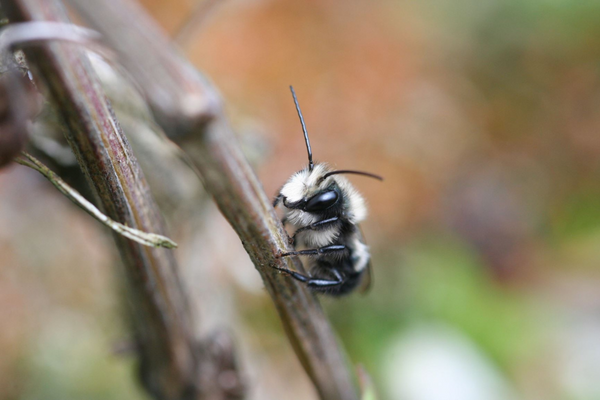Planting to attract predatory insects is one of the key tactics for pest control in an organic garden system. Insects, like plants, come in all shapes and sizes, and play many different roles in the environment as well as in the garden. As sure as some insects are pests, others are positively beneficial. Aside from performing the fundamental task of pollination, another group of insects are considered beneficial because they are predatory – they literally prey on other insects – namely pest species.
The idea of attracting wasps into the garden may seem crazy – but wasps, too, come in all shapes and sizes. Tens of thousands of species of wasps are so small that you’d have to really look carefully to find them. Nearly all wasps either actively feed on specific garden insects, or they will lay eggs on or in the insects so their young have a food source. It's a bit gruesome, but extremely effective.
It is widely understood that ladybird beetles feed on aphids, so having lots of ladybirds around will keep the aphid population in check and reduce not only the physical damage aphids can cause to plants, but reduce the risk of those aphids spreading plant viruses to other crops. Here are some other predatory insects and what they like to feed on:
Praying mantids (Orthoptera) – large and small insects
Earwigs (Dermaptera) – caterpillars and many species of small insects
Predaceous thrips (Thysanoptera) – spider mite eggs
Minute pirate bugs (Hemiptera) – insect eggs, soft-bodied insects, and small insects
Big-eyed bugs (Hemiptera) – insect eggs, soft-bodied insects, and small insects
Plant bugs (Hemiptera) – insect eggs, soft-bodied insects, and small insects
Damsel bugs (Hemiptera) – insect eggs, soft-bodied insects, and small insects
Assassin bugs (Hemiptera) – caterpillars and small insects
Predaceous stink bugs (Hemiptera) – small caterpillars
Lacewings (Neuroptera) – aphids and soft-bodied insects
Ladybird beetles (Coleoptera) – aphids, soft-bodied insects, and insect eggs
Ground beetles (Coleoptera) – insect eggs, soft-bodied insects, and caterpillars
Rove beetles (Coleoptera) – small insects
Soft-winged flower beetles (Coleoptera) – insect eggs, soft-bodied insects, and small caterpillars
Predaceous midges (Diptera) – aphids
Syrphid/hover flies (Diptera) – aphids and soft-bodied insects
Ants (Hymenoptera) – insect eggs, soft-bodied insects, and small insects
Hornets & yellow jackets (Hymenoptera) – caterpillars and small insects
Digger wasps & mud daubers (Hymenoptera) – caterpillars and small insects
And here is a list of flowering plants that will attract beneficial predatory insects:
Carrot family (Apicacea)
Caraway (Carum carvi)
Coriander/cilantro (Coriandrum sativum)
Dill (Anethum graveolens)
Fennel (Foeniculum vulgare)
Flowering ammi (Ammi majus)
Queen Anne’s lace (Daucus carota)
Toothpick ammi (Ammi visnaga)
Wild parsnip (Pastinaca sativa)
Aster family (Asteraceae)
Blanketflower (Gaillardia spp.)
Coneflower (Echinacea spp.)
Coreopsis (Coreopsis spp.)
Cosmos (Cosmos spp.)
Goldenrod (Solidago spp.)
Sunflower (Helianthus spp.)
Tansy/Phacelia (Tanacetum ssp.)
Yarrow (Achillea spp.)
Mustard family (Brassicaceae)
Basket of Gold (Aurinia saxatilis)
Hoary alyssum (Berteroa incana)
Mustards (Brassica spp.)
Sweet alyssum (Lobularia maritima)
Yellow rocket (Barbarea vulgaris)
Wild mustard (Brassica kaber)
Pea family (Fabaceae)
Alfafa (Medicago sativa)
Alsike clover (Trifolium hybridum)
Big flower vetch (Vicia grandiflora)
Crimson clover (Trifolium incarnatum)
Fava bean (Vicia fava)
Hairy vetch (Vicia villosa)
Medium Red clover (Trifolium pratense)
Yellow Sweet clover (Melilotus officinalis)
White clover (Trifolium repens)
Other species
Buckwheat (Fagopyrum esculentum)
Cinquefoil (Potentilla spp.)
















